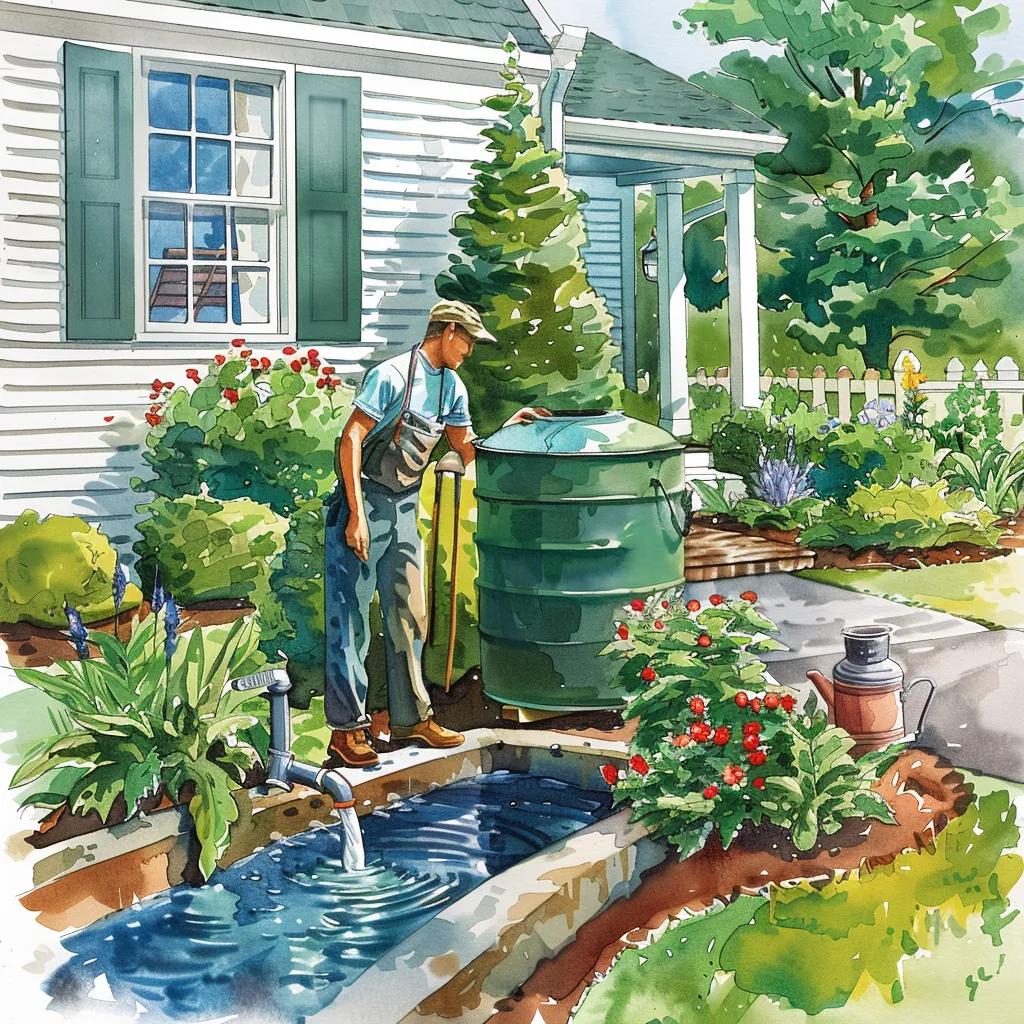Implementing rainwater harvesting transforms your garden into a sustainable oasis and slashes mains water bills by capturing and reusing rainfall. This guide covers key benefits, explores the best system types, details essential components, walks through planning and design, and provides installation plus maintenance insights for garden-scale harvesting solutions. Whether you aim to enhance plant health, cut costs, or support environmental stewardship, rainwater harvesting for gardens offers a practical, eco-friendly pathway.

Rainwater harvesting in landscaping involves capturing roof or surface runoff and storing it for irrigation, which reduces reliance on treated tap water and promotes water security. By diverting rainwater into storage tanks, gardens gain a free, nutrient-rich water source that prevents soil compaction and lowers chemical exposure. This method directly enhances plant vitality while fostering sustainability.
Rainwater harvesting offers significant environmental benefits, including reduced reliance on municipal water supplies and decreased stormwater runoff. This practice helps conserve freshwater resources and minimises the strain on existing infrastructure, contributing to more sustainable landscaping practices.
Rainwater harvesting decreases household water demand by supplying up to 50 percent of irrigation needs through stored precipitation. Collecting rainfall from rooftops and directing it into barrels or cisterns avoids mains water charges and minimises urban stormwater runoff. As a closed-loop system, it supports sustainable landscaping by conserving freshwater reserves and reducing infrastructure strain.
Rainwater harvesting improves soil infiltration and mitigates erosion by releasing stored water at controlled rates, which nurtures native vegetation and supports local biodiversity. Stored rainwater is free of chlorine and heavy metals, enabling healthier soil biota and reducing chemical leaching into groundwater. Integrating rain gardens and swales further filters pollutants and recharges aquifers.
Rainwater is naturally soft, slightly acidic, and rich in dissolved oxygen, which enhances nutrient uptake and root development. In contrast, tap water often contains chlorine and fluoride that can stress sensitive species. Regular use of collected rainwater prevents salt buildup in soil, delivering balanced hydration that supports robust flowering and foliage.
Rainwater is naturally soft and free of chlorine and other chemicals commonly found in tap water, which can be detrimental to plant health. The absence of these chemicals, along with the presence of dissolved oxygen, promotes better nutrient uptake and root development, leading to healthier plants.
Rainwater harvesting systems for gardens range from simple barrels to passive landscape features, each suited to different scales and topographies. Selecting the right system depends on collection area, storage capacity, and maintenance requirements. The following table compares three primary options:

Rain barrels collect runoff from downspouts via a screened inlet that filters leaves and debris before storage. A spigot at the barrel base supports gravity-fed drip irrigation or hose attachment. By connecting multiple barrels in series, gardeners can increase capacity and maintain continuous supply during dry spells.
Choose a cistern when garden scale or roof area generates excess runoff beyond barrel capacity, especially in regions with seasonal rainfall. Underground or above-ground cisterns integrate with pumps or gravity feeds to supply drip systems over extended dry periods. Cisterns also support automated irrigation controllers for precise water delivery.
Passive methods direct runoff into vegetated depressions or shallow channels where water infiltrates and is naturally filtered by soil and plant roots. Rain gardens use native, moisture-tolerant plants to absorb and cleanse stormwater, while swales channel excess flow along contour lines, reducing erosion and promoting groundwater recharge.
A functional rainwater harvesting system comprises catchment surfaces, conveyance piping, pre-filtration, storage vessels, and distribution fixtures. Each component ensures efficient collection, high water quality, and reliable delivery to irrigation zones. The following table outlines their roles:

Catchment areas, typically roofs or paved surfaces, gather precipitation and channel it via gutters and downspouts into storage. Proper pitch and screen installation prevent debris entry and ensure rapid draining after storms. Conveyance components must be sized to handle peak rainfall intensity to avoid overflow and water loss.
Filters and diverters remove suspended solids and initial pollutants such as pollen, hydrocarbons, and bird droppings from incoming runoff. First flush diverters redirect the initial flow of contaminated water away from storage, while fine mesh screens capture larger debris. This pre-filtration maintains clean water, reduces maintenance frequency, and protects pumps and emitters.
Rain barrels suit small gardens and require minimal installation, supporting hand-watering or simple drip lines. Cisterns supply larger landscapes and connect to automated irrigation systems. Both vessel types benefit from secure covers to prevent mosquito breeding and UV-resistant materials for durability.
Effective planning begins with assessing roof area, local rainfall patterns, and garden water requirements to calculate collection potential. Design considerations include topography, soil permeability, and integration with existing irrigation. A calculated approach ensures cost-effective installation and optimal performance.
These planning steps align system capacity with garden needs, establishing a seamless water management framework.

Installing a rain barrel requires securing a stable base, fitting gutter diverters, and connecting a flexible downspout adapter. Position the barrel on a raised platform to enhance gravity flow. Regular maintenance includes cleaning screens quarterly, inspecting seals, and flushing diverters after major storms. To winterise, drain storage vessels, disconnect hoses, and cover inlets to prevent freezing damage.
Routine upkeep ensures system longevity and prevents blockages or leaks, supporting uninterrupted water harvesting season after season.
Captured rainwater offers an efficient, chemical-free supply that boosts plant health and cuts utility costs. By understanding system types, components, and design principles, gardeners can implement tailored solutions that align with landscape goals. With straightforward installation and minimal maintenance, rainwater harvesting empowers sustainable gardening practices and fosters resilience in the face of water scarcity.

